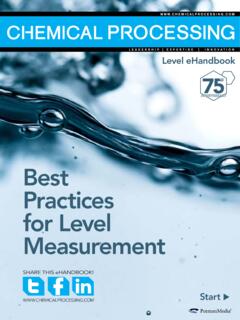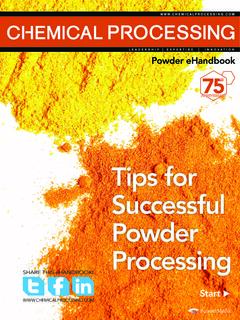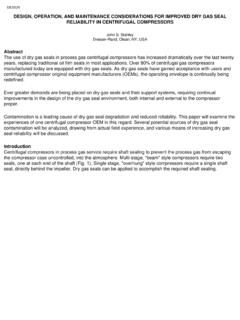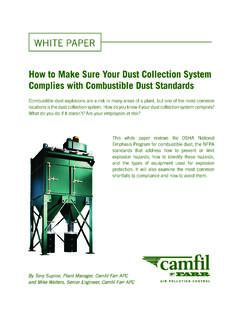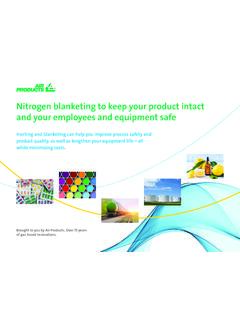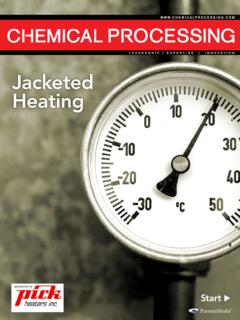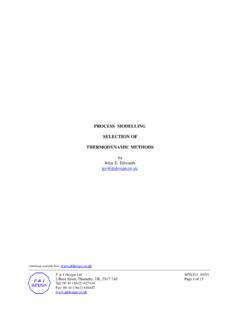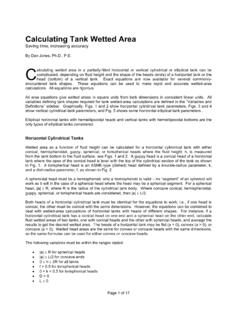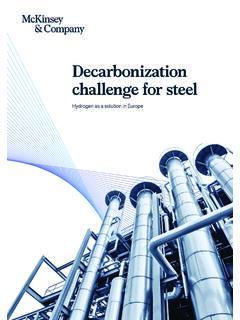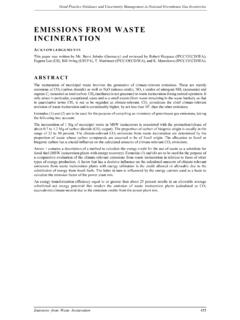Transcription of Producing Hot Water by Direct Steam Injection final
1 Heating Water by Direct Steam Injection Producing hot Water by Direct Steam Injection provides a solution where large volumes of hot Water at precise temperatures are required, and where energy and space savings are factors in system design. A viable alternative to indirect heating is the use of Direct Steam Injection . Direct Steam Injection is recommended for those facilities that have process Steam , where large volumes of process hot Water are required, or when accurate temperature control is needed. In these applications it is far more energy efficient than traditional indirect (heat exchanger) systems. Indirect Water heating systems are used primarily where hot Water demand is intermittent and close temperature control is not important.
2 These systems have certain shortcomings that make them unsuitable for many large applications such as for plant processes in industry where large volumes of hot Water are needed, and where the hot Water must be held at precise temperature. Because most indirect storage type heating systems cannot heat Water on an instant, straight through basis, they are used to heat stored Water . As hot Water is drawn off to meet demand, cold Water enters the storage tank. The incoming cold Water lowers the average temperature of the stored Water . This typically presents problems if close temperature control of the Water is critical to a process. Furthermore, if hot Water demand exceeds the recovery rate of the storage heating system, the hot Water supply could be totally exhausted.
3 In most industrial processes, when the hot Water supply is exhausted, the operation must shut down until more Water is heated. Indirect storage tank systems also require extended start up time at the beginning of the work day. Unless they are insulated, they radiate and waste enormous amounts of heat energy. Close temperature control is not possible under intermittent start/stop and variable flow conditions, even with the tankless (instantaneous) indirect Water heaters. Finally, indirect systems are relatively inefficient because they use only about 75% of the Btu s in the Steam . What is Direct Steam Injection ? With Direct Steam Injection cold Water is heated by injecting Steam directly into it. Indirect heating systems on the other hand transfer heat by conduction through a metal wall.
4 The four major advantages of Direct Steam Injection systems are: It is energy efficient. It provides an unlimited supply of hot Water . It is compact. It provides accurate temperature control. Energy efficiency Because Steam is injected directly into the Water , Direct Steam Injection systems can be up to 28% more energy efficient than indirect systems. With Direct Steam Injection , all of the Btu s in the Steam are used to heat the Water . Steam coils or heat exchangers are about 75% efficient at best, because only about 75% of the Btu s in the Steam are actually used to heat the Water . Saturated Steam at 100 psig, for example, contains 1,189 Btu s per pound. As Steam condenses in a heat exchanger, only the latent heat (about 880 Btu s) is released to heat the Water .
5 The condensate, which still contains at least 309 Btu s is at 338 F. This condensate must be removed from the system. It may be discharged to drain and wasted completely, or it may be returned to the boiler. As the condensate returns to the boiler, Btu s may be lost through faulty Steam traps and ancillary equipment. Leaking Steam traps, a major cause of energy waste, have high maintenance costs. Additional Btu s are lost by radiation from condensate return lines. At the receiver tank Btu s are lost when the condensate flashes as it is reduced to atmospheric pressure before being returned to the boiler. Overall efficiency falls too, as mineral deposits accumulate on the wetted side of the metal conductor and creates an insulating barrier.
6 With Direct Steam Injection , because 100% of the Steam is condensed in the Water as it is heated there is no need for condensate return lines with their attendant energy losses and Steam trap maintenance problems. Speed of operation Many indirect systems heat stored Water . Direct Steam Injection heats the Water instantly on a continuous straight through basis as it is used. A Direct Injection system properly sized to the available Steam supply, cold Water supply, and hot Water demand, can deliver a continuous supply of hot Water as required. The 2 user does not run out of hot Water , and does not need to store large quantities of hot Water . Compactness Even the most sophisticated Direct Steam Injection Water heating systems are so compact that they can be suspended from a wall, ceiling or mounted on a compact skid on the floor.
7 Thus, the system is desirable where space does not allow for a storage tank. When a large storage tank must be replaced, it is much easier to install a Steam Injection system than it is to bring a new large storage tank into an existing building. The more sophisticated Direct Injection systems provide very close temperature control at Constant and Variable Flow rates and in start/stop applications. This control is possible because heat transfers immediately from the Steam to the liquid when heating starts. When demand and Steam flow stop, heating ceases at once unlike a heat exchanger which continues to release residual energy. Types of Steam Injection Systems available: Many methods can be used to inject Steam directly into cold Water .
8 These differ primarily in their ability to adjust to variations in Steam pressure, incoming Water pressure, and hot Water demand. The most sophisticated Injection systems adjust automatically for these variations. Others have more limited capabilities, but are adequate in some situations. The following is a discussion of each of these systems how they work and where they may be used effectively. Sparger The simplest system is the Steam sparger, which bubbles Steam into a tank of cold Water (see Figure 1). The sparger does not have the advantages of other Direct Injection systems. Sparging systems can be simple and relatively inexpensive to install, but the disadvantages can outweigh the benefits. A sparger is perforated pipe or other fixture through which Steam is introduced directly into the Water in a vented storage tank.
9 Figure 1. Spargers heat Water in an open tank by bubbling Steam up through it. Spargers have been used for many years because they are a simple and inexpensive way to heat liquids. They are often used for boiler feed Water tanks, storage tanks and silos, and heating cryogenic fluids. Spargers have four major disadvantages. First, it is difficult to arrive at and hold a set temperature with spargers. Second, spargers 3 are the least efficient method of heating Water . This is so because, as a sparger injects Steam into the bottom of a tank, some of the Steam channels upward to the surface and flashes to the atmosphere resulting in a total waste of energy. Sparging is usually less than 50% energy efficient. Third, spargers often cause very severe Water hammer and vibration because there is no way to balance the pressure of the Steam in excess of the surrounding Water pressure.
10 Storage tanks are frequently damaged by this Water hammer and vibration. Fourth, extra time will need to be allowed to heat large volumes of Water . Mixing tees As their name implies, mixing tees (see Figure 2) are individual single use devices which blend Steam with cold Water in a tee arrangement. Three types of mixing tees are used: manual, semi automatic, and systems in which the temperature is automatically controlled. With manual systems, the operator first turns on the cold Water , and then opens the Steam valve to admit enough Steam to bring the cold Water up to temperature. With this system it is impossible to achieve more than an approximate temperature. Figure 2. Manual Mixing Tee Semi automatic mixing tees require manual adjustment of Steam and Water , but contain the added feature of an automatic Steam shutoff in the event that the Water supply is interrupted.
